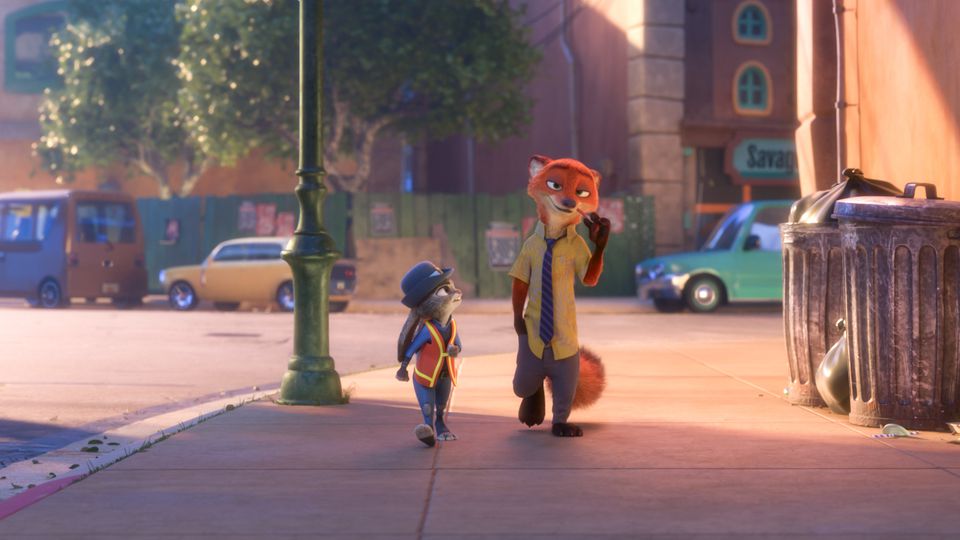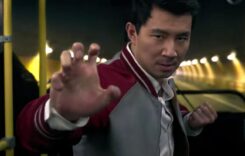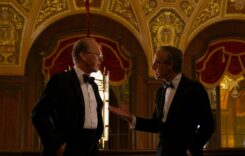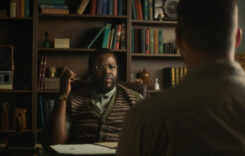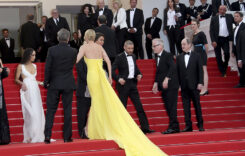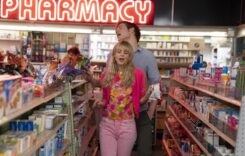MARCH 18, 2016
It’s telling about the movies in 2016 that the most provocative movie about race in the last few months is a Disney animated film.
Not since Spike Lee’s “Chi-Raq” in early December has a film dealt with racial issues in such a deft manner. And the kids will like it, too!
“Zootopia” begins where most racial harmony movies end with a dream megalopolis where predator and prey can walk down the street together as nodding friends, and no one gives it a second thought. And all the animals wear clothes.
Our guide to the wonders of Zootopia is Judy Hops (wonderfully voiced by Ginnifer Goodwin), a small bunny rabbit from a small rural town whose ambition is to become a cop in the big city. Her loving parents (Don Lake and Bonnie Hunt) encourage her to dream but don’t want her to be disappointed if her dreams don’t work out. But Judy perseveres and makes it to the Zootopia police academy, where, though determination, she graduates at the top of her class.
Once on the force with animals of all species (including an actual elephant in the room), her commanding officer, African buffalo Chief Bogo (Idris Elba), spies Judy’s diminutive size and assigns her to parking duty. Determined to make a difference, she encounters a con-fox named Nick Fox (an outstanding voice performance by Jason Bateman), whose “hustles” (as he calls them) are unethical but not illegal, clearly frustrating Judy.
Threatened with being fired, Judy volunteers to find a missing otter who, for some reason, has reverted to being a predator. Since Nick was the last person to see the otter, Judy and Nick reluctantly team up to find the missing mammal. From there, we settle into secure film noir territory with a major influence being 1997’s “L.A. Confidential.”
“Zootopia” follows all the noir rules, with mysterious characters coming in and out of the story as detective Judy sets out to determine whether the disappearance of a number of predators has anything to do with a series of attacks in the city. Film noir mysteries have previously been adapted for animation, most notably in “Who Framed Roger Rabbit” and, to a lesser degree, in “Rango.” “Zootopia” is not quite up to those films in the mystery department, but the story is an involving one nonetheless.
Where “Zootopia” excels is in tackling the delicate subject of race. Substitute “species” for “race” and the film’s message can be heard loud and clear, even by the little ones. There was a time before the current era of species harmony where one species (the prey) were terrified by the other (the predators), and memories of that era still last. (As their daughter sets off to the big city, Judy’s worried parents reflexively give her a bottle of anti-fox mace…just in case.)
The film is very smart in depicting how residents mean well when dealing with another species but sometimes stumble in communicating that good will. Take the matter of race identification. At one point, when Judy is called “cute,” she protests, “A bunny can call another bunny cute, but when another animal does it…” echoing contemporary conflicts when African-Americans use the “n” word among friends or gays use the “f–” word in the same context. This is subtle stuff for a kids’ film, but “Zootopia” is unafraid to go there.
Similarly, the film has no second thoughts in examining the combustible combination of race and politics. When politicians who vow essentially to make Zootopia great again set one species against another in an effort to terrify the populace so that they can maintain political power, the contemporary parallels are unmistakable. While kids will love the furry animals, “Zootopia” gives their parents a lot more to chew on.
Though there is a lot of plot to get through, at 108 minutes, “Zootopia” could have easily lost 15 minutes and have been more effective. The film’s reliance on contemporary technology, such as iPhones and apps, might make it feel dated 20 years from now. And the film feels a little jokey at times, in the manner of the recent smart-alecky Dreamworks animated releases.
But “Zootopia” has nerve, and the satisfaction of seeing a film “go there” is timeless.
GRADE: B+


